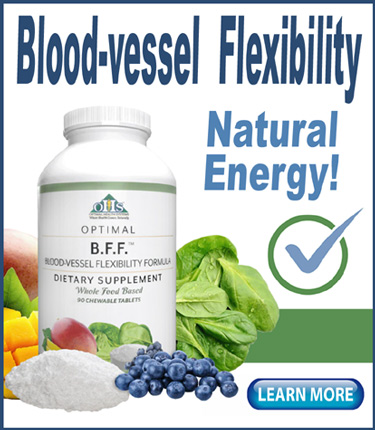Creatine is best known as the supplement that helps athletes build muscle strength and mass; however, today creatine is increasingly being recognized for far broader health benefits.
All of these health benefits are related to creatine’s capacity for promoting energy at the cellular level—a function so critical that some scientists feel creatine should be designated a conditionally essential nutrient.
Creatine basics
Creatine (N-carbamimidoyl-N-methylglycine) is a major component of energy metabolism that is abundant in human skeletal muscle and some organs. Approximately 95% of the human body’s creatine stores are found in the muscle and the remaining 5% in the brain, liver, kidney and testes.
Creatine is either synthesized internally or provided via an omnivorous diet. Since plants contain virtually no creatine, vegetarians especially should be excited about the ongoing research into creatine supplementing benefits.
Today it is widely recognized that creatine is required for normal growth of adolescents; that it helps generate energy for the middle-aged; and that it supports brain health in the elderly.
According to Harvard Health, creatine is often called an amino acid; however, it is technically “not one of the 20 amino acids that are the building blocks of all proteins.” When necessary, our bodies can make creatine from three other true amino acids: arginine, glycine, and methionine. This is the less-efficient way the body copes if it doesn’t recieve enough creatine from food or supplements.
Energy connection
Creatine is essential for energy production because it is a primary constituent of phosphocreatine, the chemical cells use to regenerate adenosine triphosphate (ATP) within the cell.
ATP provides energy to facilitate the numerous processes in living cells—muscle contraction, nerve impulse propagation, and chemical synthesis.
JustAPedia states: “Found in all known forms of life, ATP is often referred to as the molecular unit of currency for intracellular energy transfer.”
This energy connection is so beneficial that it extends far beyond the well-known muscle building benefit.
According to Dr. Richard Kreider, professor and director of the Exercise & Sport Nutrition Lab at Texas A&M University, creatine stored in muscle combines with phosphate to form creatine phosphate, which is the actual mechanism for producing cellular energy.
In an interview with Science Daily, Dr. Kreider noted: “When the body is stressed, like in exercise or under metabolic conditions like some diseases, creatine phosphate is needed to maintain energy in the cell, and therefore has a lot of protective and health benefits, in addition to the exercise performance effects that have been seen.”
Beyond boosting athletic performance, Dr. Kreider’s thirty years of research has helped drive home the lesser-known creatine benefits—benefits that stretch virtually from birth to old age.
Did you know?
Creatine means “meat”
Creatine is an organic compound found in vertebrates. It is naturally produced in the human body from the amino acids glycine and arginine.
Creatine is synthesized in the liver and kidneys and is transported through the blood and taken up by tissues with high energy demands—most notably the brain and skeletal muscle.
Creatine was first identified in 1832 when Michel Eugène Chevreul isolated it from the basified water-extract of skeletal muscle. He later named the crystallized precipitate after the Greek word for meat.
This research has shown that low dietary creatine intake in adolescence is associated with slower growth, less muscle mass and higher body fat. In seniors, creatine has been proven to help prevent muscle mass loss and support cognitive function.
“Conditionally essential”
Other researchers have deemed these benefits so necessary they have proposed rating creatine as a conditionally essential nutrient.
In a scientific perspective published in Advances in Nutrition, the European scientists wrote: “Recent advances in creatine nutrition and physiology suggest that the quantity of creatine the body naturally synthesizes is not sufficient to meet human needs. As a result, humans have to obtain enough creatine from the diet, which nominates creatine as an essential nutrient in certain circumstances.”
Conditionally essential nutrients are those that can usually be synthesized in the body in adequate amounts, but may require “exogenous supplementation” during some circumstances. These special circumstances can include situations of impaired absorption, times of increased anabolic requirements such as pregnancy and lactation, or cases of increased metabolic demand such as spinal injury or burn trauma.
This diversity of benefits is shown in recent studies: A 2019 study demonstrated creatine supplementing supports immune cells; a 2022 study showed creatine supplementing improves memory; and a 2024 study reiterated creatine’s ability to boost muscle strength and power.
How much?
Understanding the benefits is the first step. Getting appropriate quantities is the next challenge. Our bodies create about a gram per day in normal circumstances—produced endogenously in the human liver, kidney and pancreas.
However, most experts agree at least two to four grams of creatine per day is necessary, and more for performance athletes with strict exercise regimens.
Harvard Health notes “the general recommendation” for people supplementing with creatine is 3 to 5 grams per day.
According to Dr. Kreider’s research, most people fall short of getting enough creatine from diet alone. This is not surprising since consuming a pound of meat or fish provides only a gram of creatine.
In short, only supplementing can provide a therapeutic quantity of creatine.
– – –
Creatine can be found in the following Optimal Health Systems products:
• Optiaml B.F.F.
• Optimal Muscle Rx
– – –
Source: Advances in Nutrition (2021 perspective), Harvard Health, JustAPedia (creatine), JustAPedia (Adenosine triphosphate), JScholarOnline.org.


